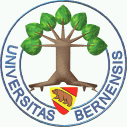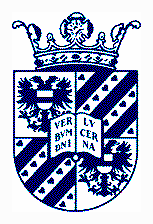



THE FINAL SCIENTIFIC REPORT IS AVAILABLE AS:
H du Buf and MM Bayer (eds) (2002). Automatic Diatom Identification. World Scientific, Series in Machine Perception and Artificial Intelligence, Vol 51. 316 pp.
Marking a real milestone in diatom research, this book details all methods and results achieved during ADIAC.
| CONTENTS: |
Diatoms have become important in several scientific disciplines not intuitively connected to phycological research. Because of their inert and intricately sculptured shells, and because some have rather narrow ecological preferences, they can be used as ecological indicators. For example, in the study of lake- and sea-bed sediments they can be used to estimate the pH and nutrient status of the water body back in time when the sediments were laid down. They are also used by archaeologists and forensic scientists to trace ceramic and clothing fragments, and in some cases to establish cause of death. Diatoms are very good indicators of water quality, and authorities responsible for drinking water use them to monitor the quality.
Unfortunately, in many cases diatom identification is carried out by non-specialists. Furthermore, progress in the use of diatoms in Europe as ecological and palaeoecological indicators, marker fossils, etc., is hampered by the chronic lack of identification tools, inefficient communication, and the slow speed of dealing with samples possibly containing many hundreds of different species. Automation by computer processing and electronic data exchange would help Europe develop the capacity to monitor and respond effectively to change in aquatic systems, and to remain at the forefront of related research.
Towards computer processing
Until recently, diatom research has always involved identification based on morphological properties. This is tedious work, because microscope slides must be scanned, eventually photographed, and the diatom specimens must be linked to described taxa. The latter is a very complicated task, even for experts, because it requires a profound knowledge of hundreds of genera and thousands of species that often differ very subtly. Information and images are scattered through atlases like those of Schmidt, Tempère, Peragallo and others, and in floras by Hustedt, Krammer & Lange-Bertalot, etc. For these reasons automation by computer processing is of paramount importance, and we are convinced that computer processing will drastically change diatom research in the near future! It is important to remember also that the introduction of DNA bar-coding techniques since 2000 cannot replace morphology-based identification for subfossil and fossil material.
Earlier work on computer identification was always based on shape descriptors, i.e. parameters which describe the shape of the outline. However, many diatoms cannot be distinguished on shape alone because different species share the same shape, although they may have quite different ornamentations (striae etc) of the valve surface. This was the main emphasis of this ADIAC project: we developed pattern recognition methods to allow identification on the basis of both valve outline and ornamentation.
This multi-disciplinary project, with a duration of three years, brought together researchers from pattern recognition, diatom applications, and taxonomic databases. It must be seen as a bundled European impulse to push diatom research and to make diatom identification an important and challenging subject in the pattern recognition society.
1 - To develop diatom image databases with different levels of discrimination complexity. These had to be suitable for testing the methods under study in this project as well as for future research. These databases were to be made accessible to all interested scientists.
2 - To develop methods for scanning slides automatically, i.e. to detect the positions of diatoms and to ignore debris with some complex structure, to store the calibrated positions, and to take high-magnification images at those positions. Autofocusing has to be an integral part of slide scanning, especially at high magnifications.
3 - To develop methods for a complete, graphical, diatom image description, i.e. of both valve shape and ornamentation yet with a limited number of parameters, which allows for a reliable identification.
4 - To develop a diatom identification system based on graph matching that takes all available morphological information into account and that produces a sorted list with best matches.
5 - To test the methods developed, using the databases, in order to access the overall performance of the algorithms and to optimize them by including expert knowledge.
6 - To integrate the identification methods into taxonomic and ecological database systems that include high-quality diatom images but also graphical representations of these consisting of the skeletons and characteristic points as derived from the model-based analysis methods.
As a result, this project aimed to generate software systems for slide scanning, autofocusing, image analysis, and pattern recognition, all optimized for diatom valve images. In parallel, large image databases were to be created, together with taxonomic and ecological descriptions.
Subtask
1a: Test image databases
Subtask 1b: Image preprocessing and compression
Subtask 1c: General image databases
Image preprocessing served to normalize the contrast etc in order to facilitate feature extraction. Test image databases contained selected diatom images with increasing discrimination complexity. These served for testing the image analysis tools. General image databases contained samples of relevant diatom species to be included in the taxonomic and ecological systems. These images were to be made available, together with analysis software, to all interested scientists.
Subtask
2a: Automatic slide scanning
Subtask 2b: Autofocusing
In this task the automation of slide scanning for diatoms was studied by linking a computer to a microscope and CCD camera. Because of the fact that diatom valves are three-dimensional (3D) objects, the exact criteria for autofocusing had to be studied in order to obtain the best images suited for a 2D analysis.
Subtask
3a: Classical analysis
Subtask 3b: Mathematical morphology
Subtask 3c: Gabor wavelets
Subtask 3d: Graph matching
In task 3 several image processing tools were implemented and their performance evaluated in order to obtain the best algorithms. On the basis of a hierarchical graphical representation, matching was to be applied to link an unknown diatom to possible matches in the databases.
This task was the formal testing and evaluation work related to task 3, providing the feedback necessary for algorithm optimization.
The original aim was to integrate the best image analysis algorithms, graph matching and the image databases to create a complete system for automated identification. Good progress was made, but full integration was not achieved.
Data management concerned not only the exchange of images etc between partners, but also provision to other interested researchers, both from taxonomy and from pattern recognition. An ADIAC homepage with image databases and software was to be created (this is what you are reading right now!).
Just as fingerprint processing became very "popular" after test images became publicly available, we hope that the same will occur for diatom processing. This field is still young and can provide challenging projects for students (graduating, MSc, PhD). Please refer also to the Public data pages.
Partnership:
Please note that some if not all partners will prepare their own ADIAC webpages as part of their institution/laboratory pages in order to show the people and activities. If you follow the links to the homepages, you will normally also find links to the institution's general webpages.
Hans
du Buf (coordinator)
University of Algarve, Vision Laboratory
Faculty of Exact Sciences and Humanities
Campus de Gambelas - UCEH, 8000 Faro, Portugal
Tel: +351 89 800900 ext 7761, fax: +351 89 818560
Email: dubuf@ualg.pt
Homepage: Vision
Laboratory
 Horst Bunke
Horst Bunke
Universitaet Bern
Institut fuer Informatik und Angewandte Mathematik
Neubrueckstr. 10, CH-3012 Bern, Switzerland
Tel: +41 31 6314451, fax: +41 31 6313965
Email: bunke@iam.unibe.ch
Homepage: IAM at UBern
 Stephen Droop
Stephen Droop
Royal Botanic Garden Edinburgh
Diatom Laboratory
20A Inverleith Row, Edinburgh EH3 5LR, UK
Tel: +44 131 248 2975, fax: +44 131 248 2901 (changed!)
Email: S.Droop@rbge.org.uk
Homepage: Algae World
 Jos Roerdink
Jos Roerdink
University of Groningen
Inst. Mathematics and Computing Science
Blauwborgje 3
P.O.Box 800, 9700 AV Groningen, The Netherlands
Tel: +31 50 3633931, fax: +31 50 3633800
Email: roe@cs.rug.nl
Homepage: Roerdink
Stephen
Juggins
University of Newcastle upon Tyne
Dept. of Geography
Daysh Building, Claremont Road, Newcastle upon Tyne
Tyne and Wear, NE1 7RU, UK
Tel: +44 191 2228799, fax: +44 191 2225421
Email: Stephen.Juggins@ncl.ac.uk
Homepage: personal web-page
Gabriel Cristobal
Instituto de Optica (CSIC)
Imaging and Vision Department
Serrano 121, 28006 Madrid, Spain
Tel: +34 1 5616800 ext 2319, fax: +34 1 5645557
Email: gabriel@optica.csic.es
Homepage: Imaging
and Vision
Dept.
Bertrand
Ludes
University Louis Pasteur
Inst. for Legal Medicine - IML
11, rue Humann, F-67085 Strasbourg Cedex, France
Tel: +33 3 88249120, fax: +33 3 88356758 (changed!)
Email: Bertrand.Ludes@iml-ulp.u-strasbg.fr
Se FOLLOW THE PUBDAT LINK!
Concerning the European Marine Science and Technology programme, you can go to the DG XII's MAST pages and the MAST-CORDIS server. Aditional information concerning the Environment and Climate programme can be found at the EUROPA and CORDIS servers.
About diatom taxonomy, databases etc:
For links to diatom websites, please go to the Algae World website, under 'links'About computer vision etc:
An absolute must is to visit the Computer Vision Home Page, where you can find almost all (?) our vision colleagues in the world. For discussions, FAQs, etc, see the newsgroups sci.image.processing and comp.ai.vision. Another useful source of information is Adrian Clark's PIXEL.
Dept.
of Electronics and Computer Science - UCEH,
University of Algarve,
Campus de Gambelas, 8000 Faro, Portugal
Tel
(+351 89) 800900 extension 7761 (is new number!)
Fax (+351 89) 818560
Back to the ADIAC FRONTPAGE
Have a look at the University of Algarve, or go to the UAlg Vision Laboratory.
Don't
forget Hein's Law:
Problems worthy of attack prove their worth by hitting back
Revised: August 2007 (David Mann)